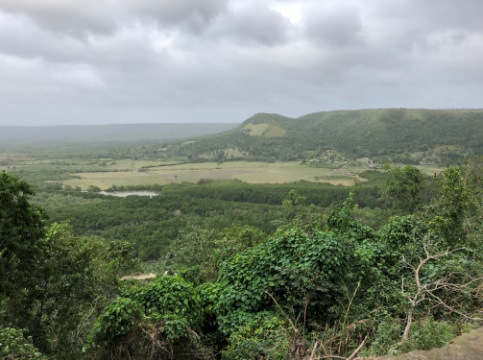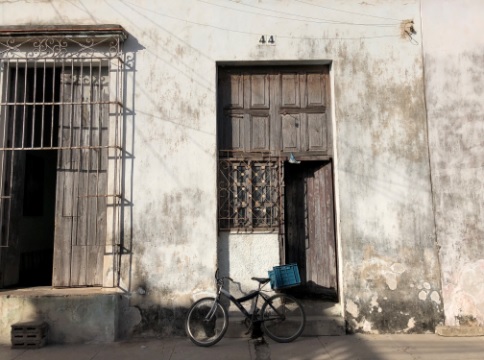Afro-Cuban culture, Blog, Cuba, Cuban Jazz, Video and audio
I think Dizzy would have loved this band and this version of the classic he wrote with Chano Pozo.
Chicas de la Habana are, well, chicas de la Habana, young women from Havana.
They’re currently based in Madrid, Spain.
As is the case for so many outstanding Cuban musicians, it’s not easy finding information about them, but their music speaks for itself.
Great news!
You can now watch this video – and all Spanish language videos – with English subtitles. It’s free!
Click here for instructions on how to turn on English subtitles.
– Ken McCarthy
Jazz on the Tube
P.S. Our unique programming is made possible by help from people like you. Learn how you can contribute to our efforts here: Support Jazz on the Tube
Thanks.
Afro-Cuban culture, Blog, Cuba, Cuban Jazz, The Cuba-US connection, Travel to Cuba, Video and audio
You’ve got to hand it to Harvard. They’ve got money and in this case they knew how to spend it.
This short video is an excellent musical and visual survey of some of the best that the western part of Cuba has to offer music lovers.
Cuban saxophonist, percussionist and composer Yosvany Terry directs the jazz bands at Harvard where he is also a Visiting Senior Lecturer on Music.
He arranged to bring the school’s jazz band and other students to Cuba for a nine day tour.
They hit all the hot spots: Güines, the home of the birthplace of percussion genius Tata Güines; Mantanzas, where they heard the danzon group Orquesta Típica Miguel Failde and the rumba super group Los Muñequitos de Matanzas; and Havana where they met and played with Cuba jazz patriarch Bobby Carcassés, chekeré master Don Pancho Terry, trumpeter Julito Padrón, and bass player Gastón Joya.
They also visited three conservatories in Havana, Guillermo Tomás, Amadeo Roldán, and the National Schools for the Arts (La Ena), something casual tourists can’t do.
Great news!
You can now watch this video – and all Spanish language videos – with English subtitles. It’s free!
Click here for instructions on how to turn on English subtitles.
– Ken McCarthy
Jazz on the Tube
Afro-Cuban culture, Blog, Cuba, Video and audio
Just as Afro-American music has strong roots in religious worship, Afro-Cuban music is firmly rooted in spiritual practice. The most popular and well known is Santería, also known as Regla de Ochá, La Regla de Ifá, or Lucumí
Pedro “Pedrito” Martinez, Roman Diaz and Little Johnny Rivero in a secular setting
The composition is “Tuesday Glory” and if you didn’t notice, it’s entirely percussion.
Left to right the instruments are conga (Little Johnny Rivero), timbale (Pedro “Pedrito” Martinez), and cajon and bata (Roman Diaz)
Recorded February 24, 2010 at Congahead.com studios.
Manteca!
From religious service to secular drum session to Latin jazz, that’s how the music flows – back and forth – and why it remains so vital to this day.
Onel Mulet ‘s arrangement of the Afro-Cuban classic “Manteca.”
Personnel:
Onel Mulet, soprano sax
Jason Marshall, baritone sax
Xavier Perez, tenor sax
Al Acosta, alto
Pedro “Pedrito” Martinez, bata (omele)
Roman Diaz, bata (iya)
Rafael Monteagudo, bata (oconcolo)
Little Johnny Rivero, conga
– Ken McCarthy
Jazz on the Tube
Afro-Cuban culture, Blog, Cuba, Cuban Jazz, Latin Jazz, The Cuba-US connection, Video and audio
In 1985, on his second trip to Havana, Dizzy Gillespie was accompanied by a documentary film crew.
The resulting film “A Night in Havana: Dizzy Gillespie in Cuba” captures Dizzy’s spirit like few other films.
The film includes beautifully shot concert footage of his performance at Havana’s Fifth International Jazz Festival, his adventures touring Havana and his reflections on Afro-Cuban and Afro-American culture.
As everyone knows, Dizzy liked to kid around.
He was also deep and not afraid to speak his mind as the film shows.
Featured musicians include: Nasyry Abdul Al-Khabyyr, drums; Sayyid Abdul Al-Kabir, reeds; Walter Davis, Jr., piano; John G. Lee, bass; Danny ‘Big Black’ Rey, congas; Gonzalo Rubalcaba; piano, and Arturo Sandoval, trumpet.
– Ken McCarthy
Jazz on the Tube
Afro-Cuban culture, Blog, Cuba, Travel to Cuba, Video and audio
The city of Matanzas has a population of about 140,000 people, about 7% of Havana.
It’s about an hour and a half east of Havana by car along a very well-maintained highway.
It’s one of the most important centers of Afro-Latin music and religion in the world, yet as the subtitle of Miguel Bretos’ excellent book on the city says, it’s “The Cuba Nobody Knows.”
More accurately, it’s the city casual tourists don’t know. Everyone who is knowledgeable about Afro-Cuban music and religion knows all about the city.
Jazz on the Tube took David Amram there (it was his first visit to Cuba outside of Havana) to visit Los Muñequitos de Matanzas.

David Amram jamming with Los Muñequitos de Matanzas in front of their headquarters.
A Los Muñequitos rumba to celebrate the birthday of the young daughter of one it its members.
There are three varieties of rumba: Yambú, Guaguancó and Columbia. You’re looking at Yambú.
Los Muñequitos de Matanzas in concert in Matanzas.
A friend makes us Frituras De Malanga
Alturas de Simpson. It’s a neighborhood in Matanzas, Simpson Heights, and also the title of an iconic danzón (1879) written by Miguel Faílde who was a pioneer of the genre.
 This is the view from Ermita de Monserrate. On one side of
This is the view from Ermita de Monserrate. On one side of
the ridge is the city and bay and on the other is this. Everyday transportation in many parts of Cuba including Matanzas: Self-replicating; runs on locally produced, non-toxic fuel; produces organic fertilizer; and environmentally sound
Everyday transportation in many parts of Cuba including Matanzas: Self-replicating; runs on locally produced, non-toxic fuel; produces organic fertilizer; and environmentally sound I judge countries on how well they take care of their children.
I judge countries on how well they take care of their children.
In that category – and many others – Cuba is #1 Matanzas: Those who know, know. Those who don’t, don’t.
Matanzas: Those who know, know. Those who don’t, don’t.
Great news!
You can now watch this video – and all Spanish-language videos – with English subtitles. It’s free!
Click here for instructions on how to turn on English subtitles.
– Ken McCarthy
Jazz on the Tube
Go to Cuba with Jazz on the Tube as your guide:
Click here for details
Artist-Educators, Blog, Cuba, Cuban Jazz, The Cuba-US connection, Video and audio
“Keep a green tree in your heart and perhaps a singing bird will come.” – Chinese proverb
 Reunited in Havana with the help of Jazz on the Tube,
Reunited in Havana with the help of Jazz on the Tube,
Cuban drummer and singer Gilberto Valdés (89) and
US composer and instrumentalist David Amram (87)
work through the rhythms of a score together over lunch.Jazz is an art of innovation, but it’s equally an art of memory, history, and tradition.
Gilberto and David know what it was like when there was a free flow of music and musicians between Cuba and the United States and what a positive impact that had on the people and music of both countries.
They also know the jarring effect of having that free flow cut off. (This was David’s first trip back to Cuba in forty one years.)
 At Gilberto’s home, David and Gilberto talk
At Gilberto’s home, David and Gilberto talk
about the fine points of Cuban percussion.Gilberto’s son is in Sao Paulo working as a filmmaker and when he visits he brings his Dad Brazilian instruments like this flute and pandeiro (tamborine.) Gilberto and David took them down off the wall where they were hanging and gave them a try.
At La Zorra and El Cuervo – the club in Havana where you can consistently hear great jazz seven nights a week – David and Orlando “Maraca” Valle on flute jam.
That’s New York’s Robby Ameen sitting in on drums. (If anyone recognizes the other players, please let me know.)
After we’ve paid the light bill and sent out the daily videos, this is an example of some of the the “behind the scenes” work Jazz on the Tube does to help make unique musical things happen in Cuba and elsewhere.
If you’re inclined to pay a voluntary user fee for your daily subscription and access to over 2,500+ classic jazz videos, we can always use the help and guarantee the money will be well used. Support Jazz on the Tube here.
Great news!
You can now watch this video – and all Spanish language videos – with English subtitles. It’s free!
Click here for instructions on how to turn on English subtitles.
– Ken McCarthy
Jazz on the Tube
Go to Cuba with Jazz on the Tube as your guide:
Click here for details









